Ford Bronco Sport Vs Ford Escape: Which Blue Oval SUV is Right for You?

French fries and potato salad: two very different foods, same base.
What we have here is Ford’s own tuber twosome. Both the Bronco Sport and Ford Escape share a platform, but the executions make for very different flavors.
With the Blue Oval’s car lineup down to just the Mustang, the Escape has gently become car-like for this latest generation, debuting in 2020. Softer styling, a smoother ride, and available hybrid powertrains—yep, plural—are its big draws.
Get a Quote on a New Ford Bronco Sport or EscapeMeanwhile, the Bronco Sport takes aim at the adventures that happen after the tarmac ends. Its more robust AWD system gives it surprising off-road chops, and its tighter dimensions help there, too. They also make it nearly exactly the same size as the original Escape.
Which of these two is better suited to your particular set of needs, though? Let’s find out.
Cabin Space
Bronco Sport: The BroSpo has a rugged, simple interior, with all the necessary controls plainly marked for easy access. Rubberized grips make them easy to operate with gloves on, too. Easy-clean surfaces underscore the Sport’s off-road mission, though you can still option up to leather if you want a fancier pony.
The upright nature of the littler Ford affords front-seat passengers with 41.5 inches (1,054 mm) of headroom. A stepped, safari-style roofline means it’s even better in the back, measuring 41.7 inches (1,059 mm). Front leg room is a stretch-out 42.4 inches (1,077 mm). At 36.9 inches (937 mm), the rear legroom is where the shorter BroSpo gives up the most space to its sibling.
Escape: The Escape features a slightly different upper dashboard design, with strips of wood to class up the joint. A dimpled door panel manages to make it feel cheaper than the Bronco Sport, however. The center console is largely the same between both models, and the supportive seats are as well.
Escape owners will find a healthy 40.0 inches (1,016 mm) of head room up front, paired with a Bronco-matching 42.4 inches (1,077 mm) of legroom. The second row gives up some headroom (39.3 inches / 998 mm), but counters with a much more accommodating 40.7 inches (1,034 mm). Hybrid models lose a little under two inches of rear legroom. Shoulder- and hip room are also fractionally better in the Escape.
SEE ALSO: Subaru Outback vs Subaru Forester ComparisonBottom Line: We like spending time in the Bronco Sport more than its cost-cutting sibling, but there’s no arguing with the measuring tape: the Escape is more spacious.
Cargo Space and Towing
Bronco Sport: Ford says the Bronco Sport will swallow up to 29.4 cubic feet (833 liters) of stuff with the rear row up. Drop it and that more than doubles to 60.6 cubes (1,716 L). There are plenty of cargo hooks to hang small accessories, as well. We can’t ignore the adjustable tailgate spotlights, or built-in bottle opener. Plus, the tailgate window opens separately.
Properly equipped, the BroSpo will tow up to 2,200 pounds (998 kg) with the 2.0-liter engine. Other trims are set at 2,000 lb (907 kg).
Escape: If the sliding second row is pushed far forward, the Escape will hold 37.5 cu-ft (1,062 L) in the cargo hold. Fold the seats down and gas-only models boast 65.4 cubes (1,852 L). Hybrid models cut into the these numbers ever so slightly, but still beat the Bronco Sport, at 34.4 and 60.8 cubes (974 and 1,722 L), respectively.
It might be the softer-looking sibling, but when properly equipped, the Escape will haul up to 3,500 lb (1,588 kg). Not many vehicles in the compact segment can top that.
Bottom Line: It’s no surprise the larger vehicle offers more storage space. But it is surprising the Escape eclipses the Bronco Sport when towing. Another win for big brother.
Technology and Features
Bronco Sport: Every Bronco Sport comes with an 8.0-inch touchscreen running SYNC3, with wired Apple CarPlay and Android Auto support. It’s a fine operating system, with clear menus and average response times. A 4.2-inch LCD display sits between the analog dials; higher trims include a larger 6.5-inch itme.
You’ll find manual, single-zone climate controls in the base model BroSpo; move up to the Big Bend for automatic climate control and heated front seats. Dual-zone comes in for the top two trims, along with a B&O 10-speaker sound system. Every model offers up an available Wi-Fi hotspot, though.
The Badlands includes additional tech to make off-roading easier. This includes hill descent control, a front-facing camera system, and additional drive modes.
Escape: The Escape starts with a tiny touchscreen, but an 8.0-inch screen replaces it beyond the base model. It’s the same SYNC3 setup as the Bronco Sport. Higher trims get fancy with a 12.3-inch fully digital instrument panel, however.
Like the Bronco Sport, the Escape features manual climate controls in the base model. Single and dual-zone climate controls show up on the Escape SE option list, along with heated front seats; they’re standard further up the line. Same goes for a wireless charging pad and panoramic moonroof. The Escape offers up the same Wi-Fi hotspot and B&O sound system as the Bronco, too.
SEE ALSO: 2020 Honda CR-V Hybrid First Drive ReviewBottom Line: As expected, these two share a lot of the same tech features. The big differences are at the bottom and top of the ranges. The Escape has a tiny central screen in fleet-friendly S trim versus the 8.0-inch touchscreen in the base BroSpo. At the high end, the Escape holds an advantage with the digital instrument panel and panoramic moonroof. In the volume-leading middle trims, they’re pretty much even.
Powertrains
Bronco Sport: If you opt for the Bronco Sport Badlands, you’ll find a 2.0-liter turbocharged four cylinder engine. This four-pot is good for 250 horsepower and 277 pound-feet of torque, routed to all four wheels via an eight-speed automatic. The rest of the lineup lops a cylinder off, with a 1.5-liter three-pot making 181 hp and 190 lb-ft. AWD is standard on all trims.
A standard terrain management system (GOAT – Goes Over Any type of Terrain) provides five different modes for 1.5-liter models, and seven for the 2.0-liter.
SEE ALSO: 2020 Ford Escape Hybrid vs 2020 Toyota RAV4 HybridEscape: If you’re shopping gas-only Escapes, you’ve got the same two EcoBoost engine options as the BroSpo: a 1.5-liter three-cylinder and 2.0-liter four-cylinder. The smaller engine is available with either front- or all-wheel drive; the latter is AWD only, and enjoys a 3 lb-ft advantage (now 280 lb-ft).
Want a hybrid? You’ve got options. Both the series and plug-in versions use a 2.5-liter naturally-aspirated four-cylinder, paired with an electric motor. Total output is 200 hp in both, though the PHEV can naturally go further on nothing but electrons. It’s front-drive only, though; the regular hybrid comes with either drivetrain setup.
Bottom Line: Until the Bronco Sport offers a hybrid version, the Escape has it licked.
Fuel Economy
Bronco Sport: The EPA pegs the 1.5-liter Bronco Sport at 25 mpg city, 28 mpg highway, and 26 mpg combined. Canadian figures are 9.3, 8.3, and 8.9 L/100 km, respectively.
Spring for the 2.0-liter and you’re looking at 21/26/23 mpg (11.1/8.9/10.1 L/100 km).
SEE ALSO: 2020 Kia Telluride vs 2019 Subaru Ascent: Three-Row ThrowdownEscape: A front-drive Escape 1.5-liter scores 28 mpg city and 34 mpg highway, combining for an even 30 mpg average. Canadian figures are 8.5, 6.8, and 7.8 L/100 km, respectively. Checking the AWD box shaves 2 mpg off both city and combined figures, and 3 mpg off the highway score. (Canada: 9.0/7.6/8.4 L/100 km.)
Splashing for the 2.0-liter? You’re looking at 23/31/26 mpg (10.4/7.5/9.1 L/100 km), respectively.
Opt for a front-drive hybrid Escape and the EPA says it’ll crack 44 mpg in the city, with a 37 mpg highway rating bringing the average to 41 mpg. For those keeping score at home, that’s the top compact crossover rating. The second-best model? The AWD Escape hybrid, which drops to 40 mpg combined thanks to a 1 mpg hit to its city rating.
The plug-in hybrid will hit 40 mpg combined when running on gas only, and has a 105 mpg-equivalent rating. Its all-electric range is around 38 miles (61 km) per charge.
Bottom Line: It’s pretty clear that the Bronco Sport’s barn-door aerodynamics contribute to its lower scores. Plus, no hybrid. Another win for the Escape.
SEE ALSO: Toyota RAV4 vs Honda CR-V: Which Crossover Is Right For You?Safety
Bronco Sport: Ford fits every Bronco Sport with its basic Co-Pilot360 suite of driver assists. This includes pre-collision assist with automated emergency braking, lane-keeping assist, blind-spot monitoring with rear cross-traffic alert, and auto high-beams. You’ll find adaptive cruise control with stop-and-go, lane-centering, and speed sign recognition in the optional Co-Pilot360 Assist+ package.
The Insurance Institute for Highway Safety (IIHS) awarded the Bronco Sport with its highest Top Safety Pick+ rating. Meanwhile, the National Highway Traffic Safety Administration (NHTSA) gave it a 5-star rating, with an SUV-standard 4-star rollover rating.
Escape: Stop us if you’ve heard this one before: the Escape comes standard with the Co-Pilot360 suite of driver assists. Yep, the same standard lineup of assists from the Bronco Sport is present here, and the optional Assist+ package is available, too.
The IIHS rates the Escape a Top Safety Pick when equipped with the optional LED headlights. It matches the Bronco Sport’s NHTSA ratings exactly.
Bottom Line: With these two mirroring each other so closely, the deciding factor here would have to be the crash test ratings. Thus, the Bronco shades the Escape.
Styling
Bronco Sport: Ford has sprinkled the Bronco styling cues onto its sub-compact crossover in a way that works. It’s blocky and cute, with a decent amount of off-road toughness in Badlands trim. Plus, it comes in a few bright colors!
Escape: Get rid of the body cladding and you’d be forgiven for mistaken the Escape as the latest Focus. It’s a softer look, with a gaping front grille being its most divisive feature. An available Sport trim gives it a welcome bit of edge.
SEE ALSO: Subaru Forester vs Nissan Rogue: Which Compact Crossover is Right for You?Bottom Line: Tastes vary, but we’d be lying if we didn’t say we prefer the Bronco Sport’s form. It’s more traditional SUV, the sort of shape that’s easy to recreate with Lego.
Pricing and Value
Bronco Sport: A base Bronco Sport $28,710 ($34,294 CAD). From there it’s a small step up to the well-equipped Big Bend $30,215 ($36,294 CAD). Those wanting more luxury and/or off-road capability will want to explore the $34,355 ($39,794 CAD) Outer Banks and $34,855 Badlands ($42,294 CAD), both of which offer additional option packages.
Escape: The Escape lineup starts at $26,800 ($30,644 CAD) for the front-drive S trim. Adding AWD requires another $1,500 on either side of the border. You’ll need that box checked if you want the 2.0-liter engine, which is an $1,800 ($2,000 CAD) option on the SEL, and standard on the Titanium ($37,300 / $42,244 CAD).
If you’re thinking hybrid, the front-drive SE kicks off the battery-assisted lineup at $29,375 ($34,844 CAD). A top-shelf Titanium carries an MSRP of $34,845 ($39,744 CAD). An SEL splits the difference between them. Plug-in models of all three trims demand a $5,000–$6,000 premium depending on trim and market, but can be eligible for federal, state, and provincial rebates.
Bottom Line: With a higher starting price and higher destination fee—not to mention the standard AWD—the Bronco is more expensive across the entire gas-only board. Only the plug-in Escapes eclipse their little brothers.
In Conclusion
Here’s an uncomfortable truth: the Bronco Sport might be the new hotness, but the Escape is undoubtedly the better family vehicle. It’s better on gas, more affordable, and more spacious. If hauling the family is the primary goal of your smallish Blue Oval SUV, this is the clear choice, especially with the fuel-sipping hybrid models.
We acknowledge that, should those activities include a gnarly trail or two, the Bronco Sport will fare better. Plus, it looks cooler—and we can’t ignore that image matters when buying a new vehicle. Our recommendation? Drive them both, and bring your biggest regular cargo piece to make sure it fits.
Become an AutoGuide insider. Get the latest from the automotive world first by subscribing to our newsletter here.

Kyle began his automotive obsession before he even started school, courtesy of a remote control Porsche and various LEGO sets. He later studied advertising and graphic design at Humber College, which led him to writing about cars (both real and digital). He is now a proud member of the Automobile Journalists Association of Canada (AJAC), where he was the Journalist of the Year runner-up for 2021.
More by Kyle Patrick



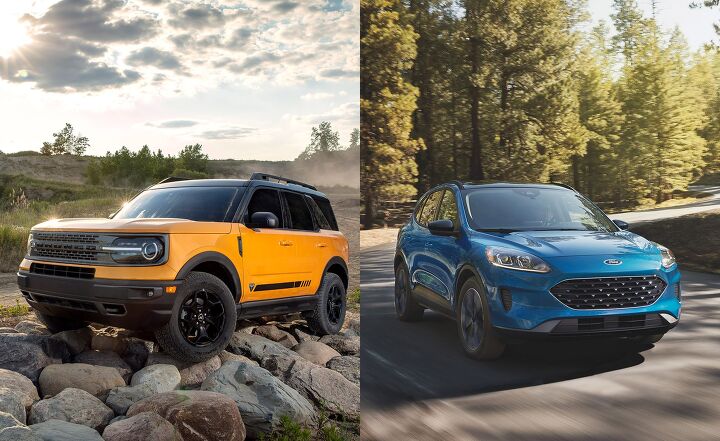



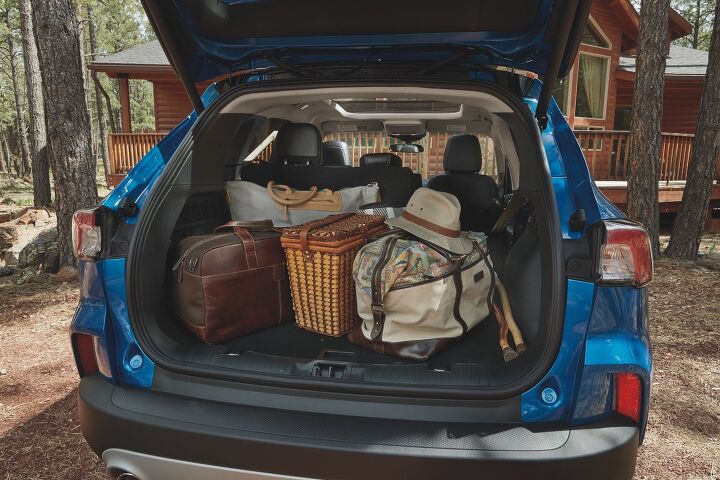

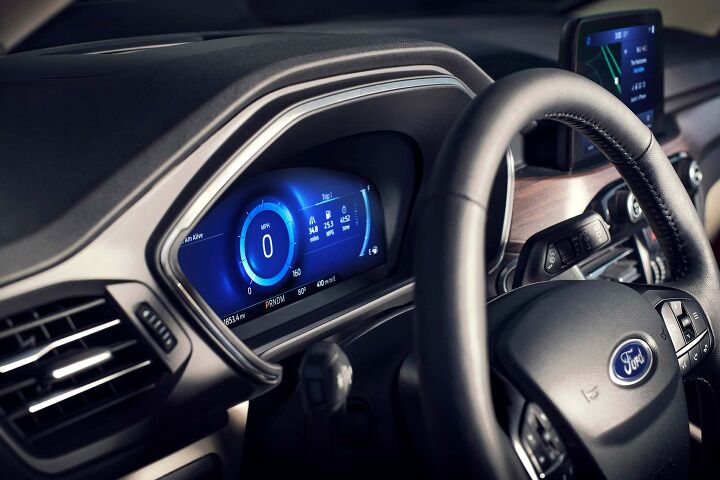


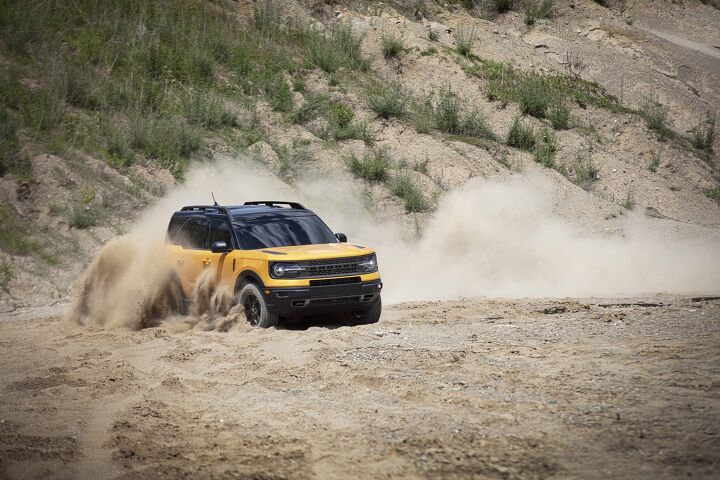



















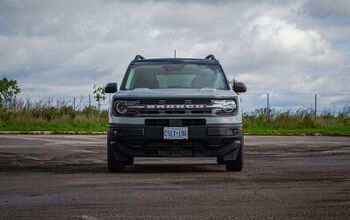
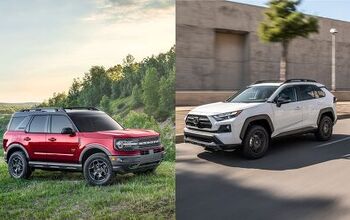
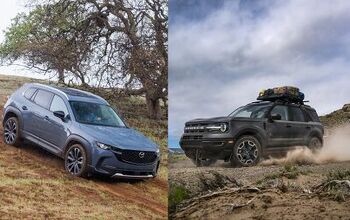
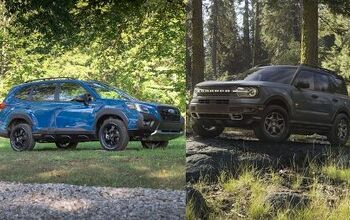
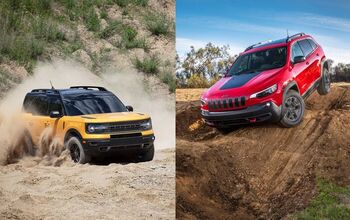

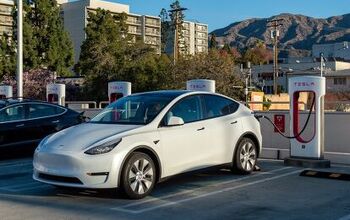

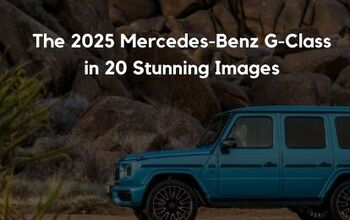


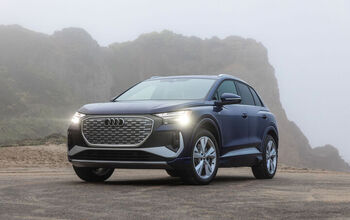
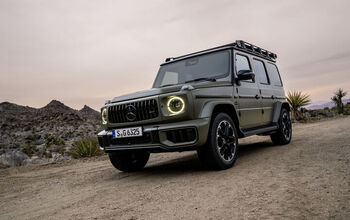

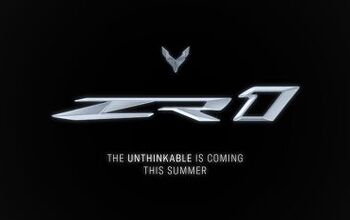
Comments
Join the conversation
Best price and colors
Scored a 2020 Escape SE used with only 845 miles onnit. Brand new , 2 years old. Can't beat that. First SUV ever and am enjoying the mpg.